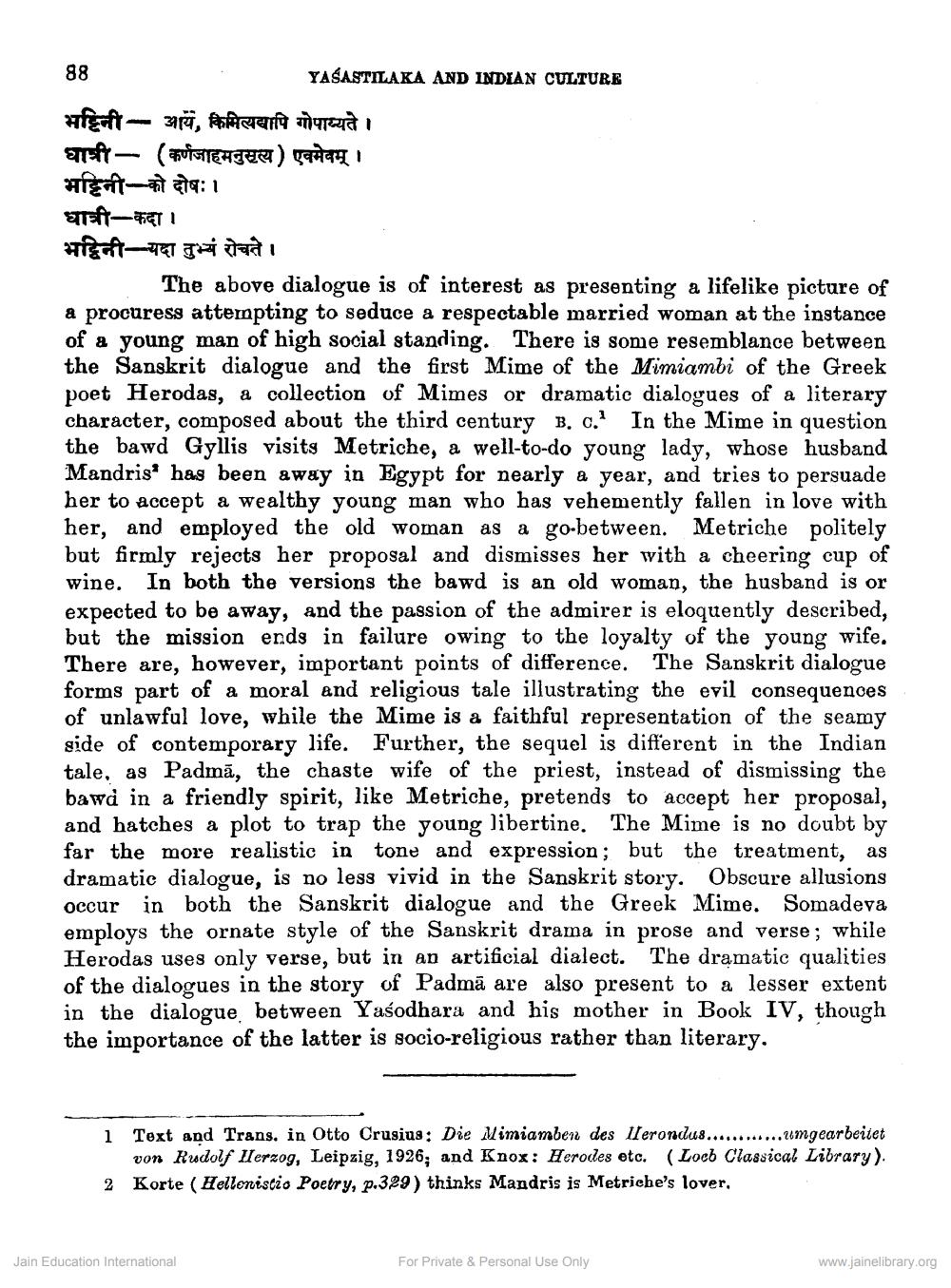________________
88
YASASTILAKA AND INDIAN CULTURE
Heft 31, htcrema maana धात्री- (कर्णजाहमनुसृत्य) एवमेवम् । भट्टिनी-को दोषः। Eft-11 भहिनी-यदा तुभ्यं रोचते।
The above dialogue is of interest as presenting a lifelike picture of a procuress attempting to seduce a respectable married woman at the instance of a young man of high social standing. There is some resemblance between the Sanskrit dialogue and the first Mime of the Mimiambi of the Greek poet Herodas, a collection of Mimes or dramatic dialogues of a literary character, composed about the third century B. c. In the Mime in question the bawd Gyllis visits Metriche, a well-to-do young lady, whose husband Mandris" has been away in Egypt for nearly a year, and tries to persuade her to accept a wealthy young man who has vehemently fallen in love with her, and employed the old woman as a go-between. Metriche politely but firmly rejects her proposal and dismisses her with a cheering cup of wine. In both the versions the bawd is an old woman, the husband is or expected to be away, and the passion of the admirer is eloquently described, but the mission ends in failure owing to the loyalty of the young wife. There are, however, important points of difference. The Sanskrit dialogue forms part of a moral and religious tale illustrating the evil consequences of unlawful love, while the Mime is a faithful representation of the seamy side of contemporary life. Further, the sequel is different in the Indian tale, as Padmā, the chaste wife of the priest, instead of dismissing the bawd in a friendly spirit, like Metriche, pretends to accept her proposal, and hatches a plot to trap the young libertine. The Mime is no doubt by far the more realistic in tone and expression; but the treatment, as dramatic dialogue, is no less vivid in the Sanskrit story. Obscure allusions occur in both the Sanskrit dialogue and the Greek Mime. Somadeva employs the ornate style of the Sanskrit drama in prose and verse; while Herodas uses only verse, but in an artificial dialect. The dramatic qualities of the dialogues in the story of Padma are also present to a lesser extent in the dialogue between Yasodhara and his mother in Book IV, ti the importance of the latter is socio-religious rather than literary.
1 Text and Trans, in Otto Crusius: Die Mimiamben des Ierondus............ umgearbeiiet
von Rudolf Herzog, Leipzig, 1926; and Knox: Herodes etc. (Locb Classical Library). 2 Korte (Helloniscio Poetry, p.329) thinks Mandris is Metriche's lover,
Jain Education International
For Private & Personal Use Only
www.jainelibrary.org




